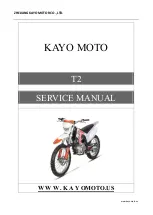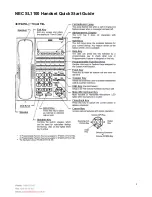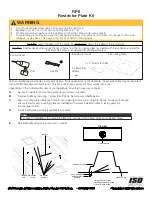
To deactivate the VPS, rotate the slider upwards (Fig. 6 A) until you hear the click, which means
the slider and VPS are correctly in place.
To activate the VPS, rotate the slider towards the bottom of the helmet (Fig. 6 B) until you hear
the click, which means the slider and VPS are correctly in place.
The VPS has been designed to ensure an easy, quick and tool-free disassembly.
Precautions for use
The current approval standards (ECE22-05) state that the minimum light transmittance levels
must be greater than 80% when riding at night and not less than 50% when riding during the day.
For this reason, when riding during the day under particularly bright weather conditions, e.g. very
strong sunlight caused by high intensity and/or incidence of the sunbeams, the use of sunglass-
es - which have a transmittance much lower than 50% - turns out to be advisable, if not absolute-
ly necessary, to reduce eye fatigue on long trips. Sunglasses reduce the risk of direct dazzling as
opposed to the use of mere approved visors. However, the use of sunglasses makes it difficult to
perform in emergency situations when the maximum visibility range of the visor must be quickly
restored. Just think, for example, of what happens when you enter a tunnel or when unexpected
changes in environmental brightness occur. Thanks to its operating mechanism, the VPS makes
these operations much easier.
WARNING
-
The VPS can be used only during the day and under the environmental conditions described
before.
-
At night and/or in poor visibility conditions, the VPS MUST be deactivated.
-
Always check that the VPS is properly positioned according to the different weather/environ-
mental conditions and/or to the above mentioned recommendations for use.
-
We recommend using the VPS only and solely together with the approved standard visor,
which has a transmittance value greater than 80%.
-
Since the VPS does not assure you the same protection as the one provided by the visor, it
has to be used only when the helmet visor is pulled down.
-
Always make sure that the VPS is clean and that it is operating properly in order to avoid
scratches and/or anomalous wear on it every time it is activated.
-
Always check the correct VPS operation and in case of malfunctioning do not use the helmet
and contact immediately a Nolan authorized dealer.
-
Please refer to the proper section in the helmet user’s manual for the VPS and visor mainte-
nance and cleaning operations.
-
The VPS scratch-resistant and fog-resistant treatment highly reduces fogging. Protracted
periods of adverse weather and/or environmental conditions might cause fogging and/or for-
mation of condensation on the VPS, which entails a reduction of visibility and/or sharpness
of vision: in this case, deactivate the VPS.
-
In case of rain, the direct contact of raindrops with the scratch-resistant and fog-resistant
treated VPS quickly reduces sharpness of vision, thus causing scarce visibility: in this case,
deactivate the VPS.
-
The special VPS fog-resistant treatment is usually sensitive to high temperatures or heat
sources. In this case, contaminations caused by contact with other materials might occur.
These contaminations will cause marks and stains to develop. In these cases (e.g. when the
helmet is kept in the top case on hot days), it is recommended to make sure the visor is not
touching other materials.
14
Содержание N86
Страница 71: ...66 ...
Страница 72: ...67 EÏÏËvÈÎ ...
Страница 79: ...MIN MAX Fig 1 Fig 2 Fig 3 Fig 4 Fig 5 Fig 6 A Fig 6 B A B1 B2 ...
Страница 80: ...Fig 8 Fig 7 Fig 9 A Fig 9 B Fig 10 A Fig 10 B Fig 10 C Fig 10 D ...
Страница 81: ...ISTR000000089 CART ISTR N86 03 2013 Fig 12 Fig 11 Fig 13 A Fig 13 B Fig 15 A Fig 15 B Fig 14 ...
















































